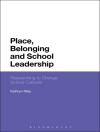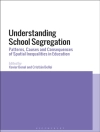‘Beginning with a remarkably comprehensive and accessible analysis of the gap′s causes, the book offers a refreshingly balanced, evidence-based, state-of-the-art outline of productive solutions that should inform the work of all educational stakeholders.’
—Ken Leithwood, Professor
OISE/University of Toronto
‘No one is better positioned than Joseph Murphy to provide lessons for education leaders on this important topic.’
—Andrew Porter, George and Diane Weiss Professor of Education
University of Pennsylvania
‘For too long, the achievement gap has been proclaimed, discussed, and then dismissed as a subject of despair. Seldom has it been systematically defined, placed in historical perspective, or positively addressed. Through thorough scholarship, comprehensive knowledge, and creativity, this book fills that void.’
—James W. Guthrie, Patricia and Rodes Hart Professor of Educational Leadership and Public Policy
Vanderbilt University
‘While offering no simple pathway to progress, this book reminds us how much more we can do to close achievement gaps.’
—Michael S. Knapp, Director
Center for the Study of Teaching & Policy, University of Washington
Discover what research says about the achievement gap and what educators can do to close it!
Distinguished researcher Joseph Murphy has gathered and analyzed the most up-to-date research and data to help school leaders understand what the achievement gap is, why it persists, and what educators can do about it. This comprehensive handbook:
- Examines external factors that contribute to achievement gaps, such as socioeconomic status, family environment, racism, and individual differences
- Covers internal factors such as instruction, school culture, and school support
- Provides strategies for addressing both internal and external factors to make an impact
Зміст
About the Author
Part I. Background
1. Bringing Achievement Gaps Into Focus
2. Portraying and Tracking Achievement Gaps
Part II. Grinding Up Hope: Explaining the Development of Achievement Gaps
Introduction
Environment
3. An Introduction
4. Socioeconomic Status
5. Family Environment
6. Community, Racism, and Individual Differences
7. Out-of-School Learning Experiences
Schooling
8. Instructional Program
9. School Culture, Structure, and Support
Part III. Opening the Doors of Possibility: Strategies for Closing Achievement Gaps
Introduction
10. Focusing on the Social and Economic Environment
11. A Focus on Schooling
References
Index
Про автора
Joseph F. Murphy is the Frank W. Mayborn Chair and associate dean at Peabody College of Education at Vanderbilt University. He has also been a faculty member at the University of Illinois and The Ohio State University, where he was the William Ray Flesher Professor of Education.In the public schools, he has served as an administrator at the school, district, and state levels, including an appointment as the executive assistant to the chief deputy superintendent of public instruction in California. His most recent appointment was as the founding president of the Ohio Principals Leadership Academy. At the university level, he has served as department chair and associate dean.He is past vice president of the American Educational Research Association and was the founding chair of the Interstate School Leaders Licensure Consortium (ISLLC). He is co-editor of the AERA Handbook on Educational Administration (1999) and editor of the National Society for the Study of Education (NSSE) yearbook, The Educational Leadership Challenge (2002).His work is in the area of school improvement, with special emphasis on leadership and policy. He has authored or co-authored 18 books in this area and edited another 12. His most recent authored volumes include Understanding and Assessing the Charter School Movement (2002), Leadership for Literacy: Research-Based Practice, Pre K-3 (2003), Connecting Teacher Leadership and School Improvement (2005), Preparing School Leaders: Defining a Research and Action Agenda (2006), and Turning Around Failing Schools: Lessons From the Organizational Sciences.












